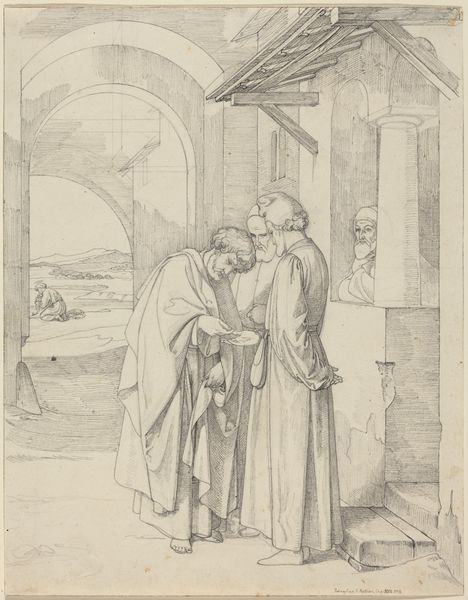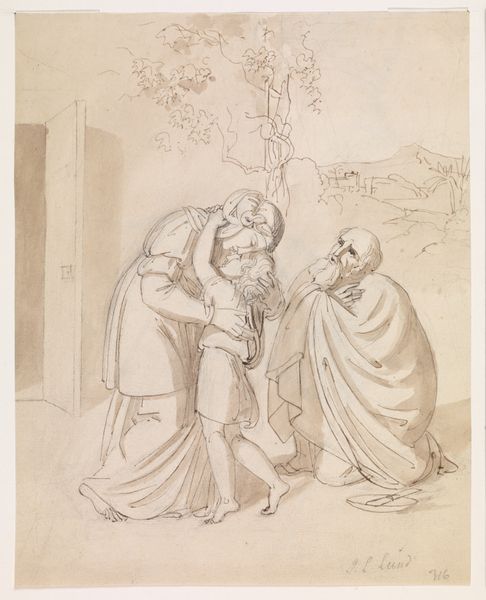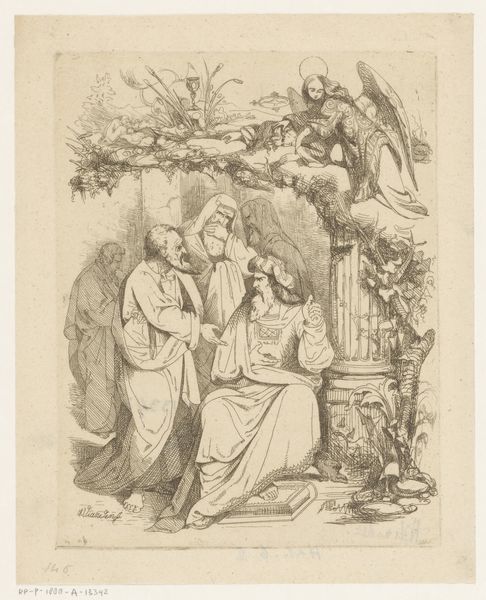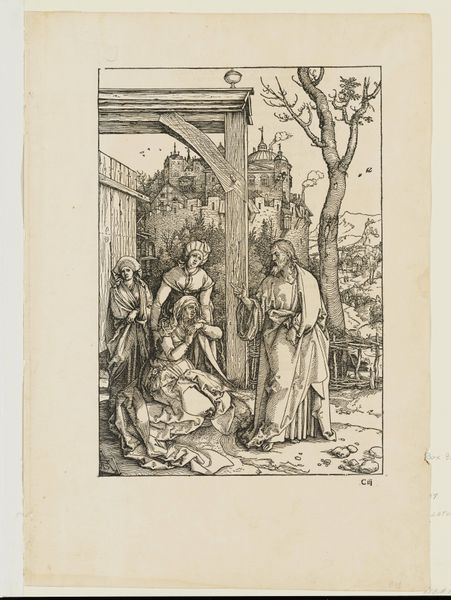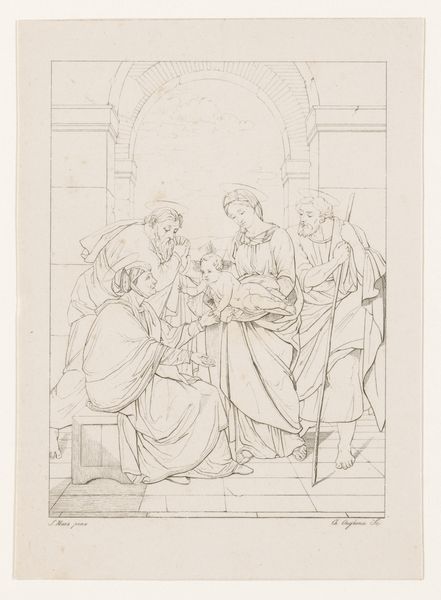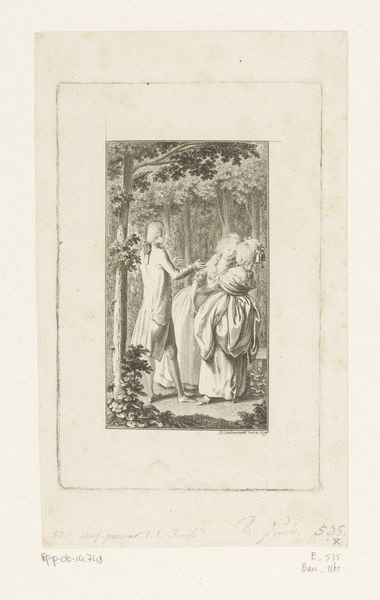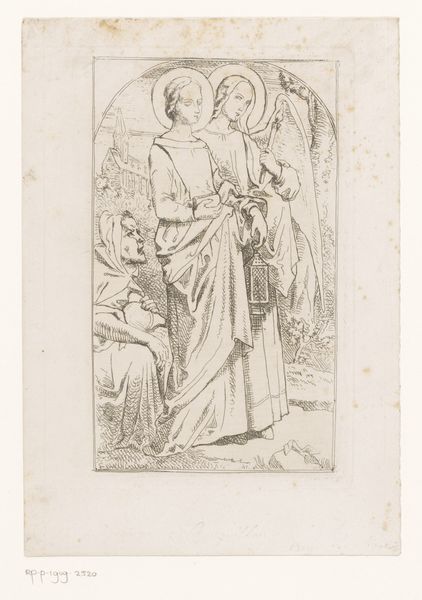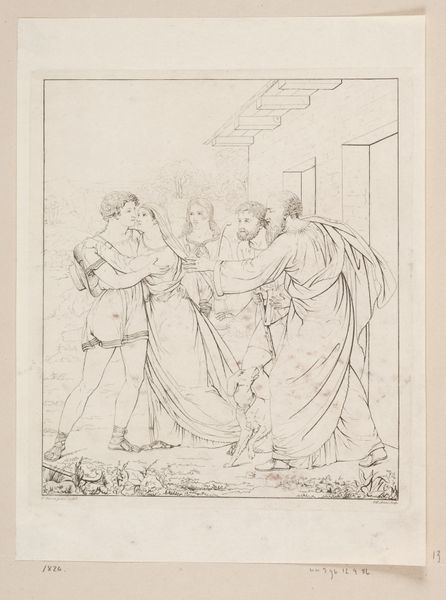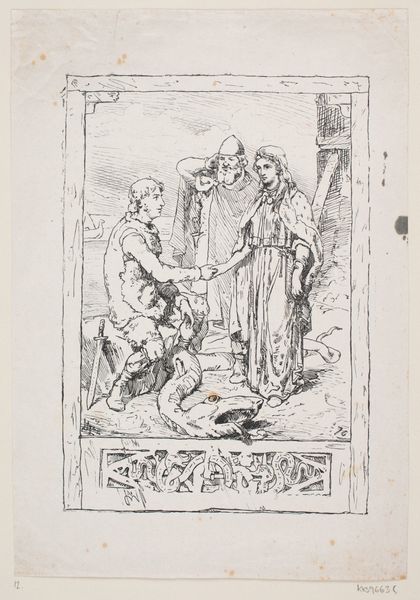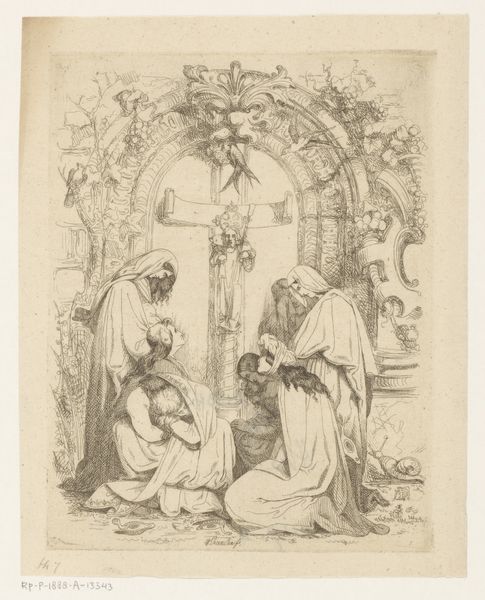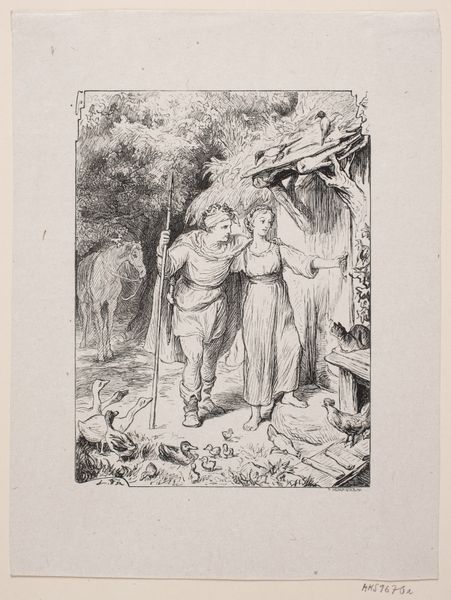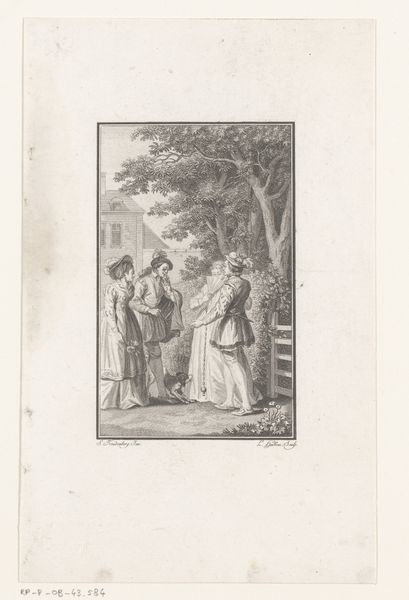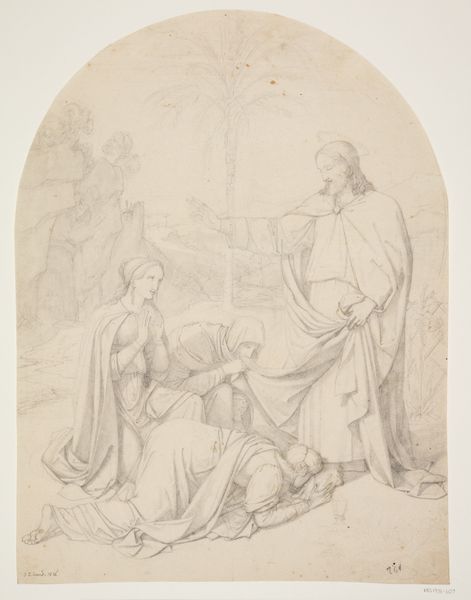
drawing, print, pencil
#
portrait
#
drawing
#
narrative-art
# print
#
dog
#
landscape
#
figuration
#
romanticism
#
pencil
#
men
#
history-painting
#
academic-art
Dimensions: sheet: 9 1/8 x 8 1/4 in. (23.2 x 21 cm)
Copyright: Public Domain
Curator: Ah, "Tobias Takes Leave of his Father," a pencil drawing by Carl Gottlieb Peschel, dating back to 1829. You know, looking at it now, I’m struck by the sentimental weight these narrative scenes carried within the Romantic movement. Editor: Sentiment is certainly a key element. Immediately, the composition draws me in—the figures arranged almost as if on a shallow stage. The limited tonal range of the pencil lends a subtle dreamlike quality, don't you think? Curator: Absolutely. Peschel was part of a burgeoning art scene in Dresden. Works such as this allowed artists to cater to growing middle-class audiences eager for moralizing subjects but increasingly alienated from institutions like the church. Editor: The symbolism seems quite explicit: the embrace as a pivotal moment, a transition almost. Note the careful rendering of drapery and faces that communicate this internal state and this key plot moment. Curator: He really captured the performative nature of these leave-taking rituals, didn't he? The positioning of Tobias' mother, cloaked and receding, emphasizes both the personal sorrow of separation and women's circumscribed public role. The inclusion of the dog at their feet signifies familial loyalty and domestic values. Editor: And despite the overall symmetry, the slightly awkward positioning of the figures draws attention to the tension between classical ideals and romantic sensibilities. Peschel seemed to highlight it intentionally. Curator: Yes, this is certainly part of academic art training. The narrative itself derives from the Book of Tobit, which recounts a story of faith, obedience, and divine intervention— popular themes throughout the 19th century. These served as reassurance in times of change. Editor: What is interesting is how Peschel reduces the narrative’s potential melodrama and how the restraint and carefully studied poses convey a depth of emotion far beyond what we initially detect. Curator: Studying this piece reminds us how deeply embedded these domestic dramas were in the artistic fabric of the Biedermeier era. The image clearly provided its contemporary audience not merely art appreciation, but an exploration of identity, devotion and society. Editor: And when viewed from a purely compositional stance, the arrangement and emotional tone subtly underscore a moment poised between tranquility and turmoil, captured with striking graphic efficiency. Thank you for these social, historic considerations.
Comments
No comments
Be the first to comment and join the conversation on the ultimate creative platform.
